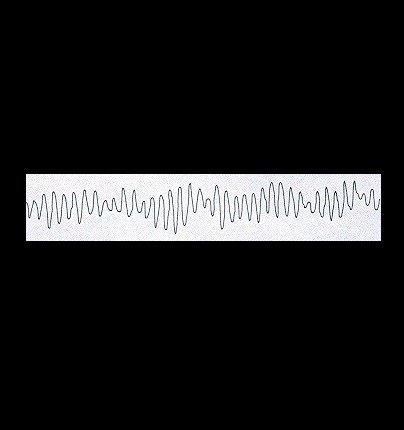Class I and class III antiarrhythmic drugs, as well as a wide variety of other pharmacologic agents and toxins may cause a distinct form of ventricular tachycardia known as “torsade de pointes.” This tem was coined in 1996 by Dessertenne to describe a ventricular tachycardia in which the QRS complexes “twist” around the isoelectric line, simulating a corkscrew. The ECG strip shown here is an example of torsade de pointes. It was recoded from the patient whose ECG and rhythm strips are shown on the following page.

